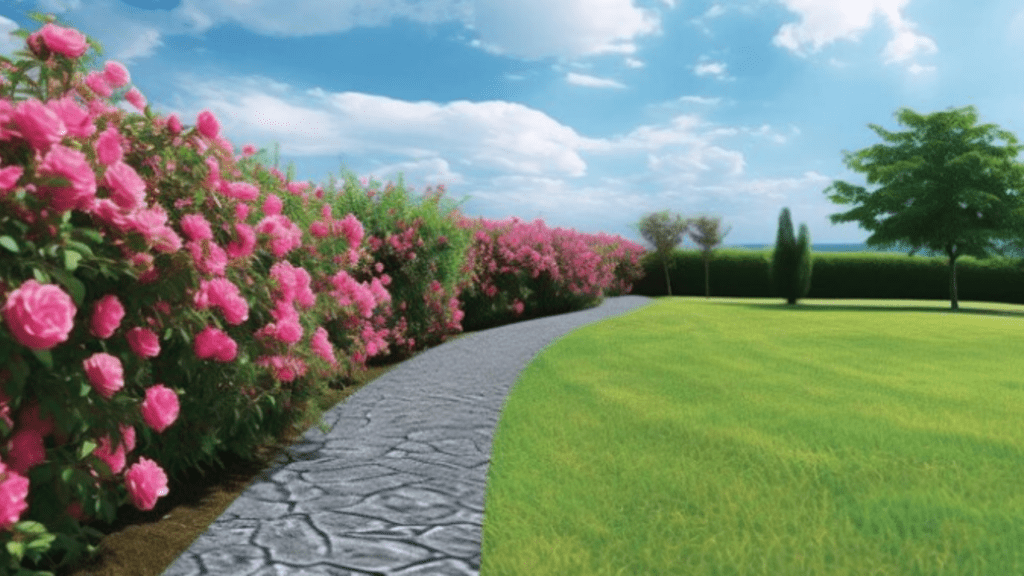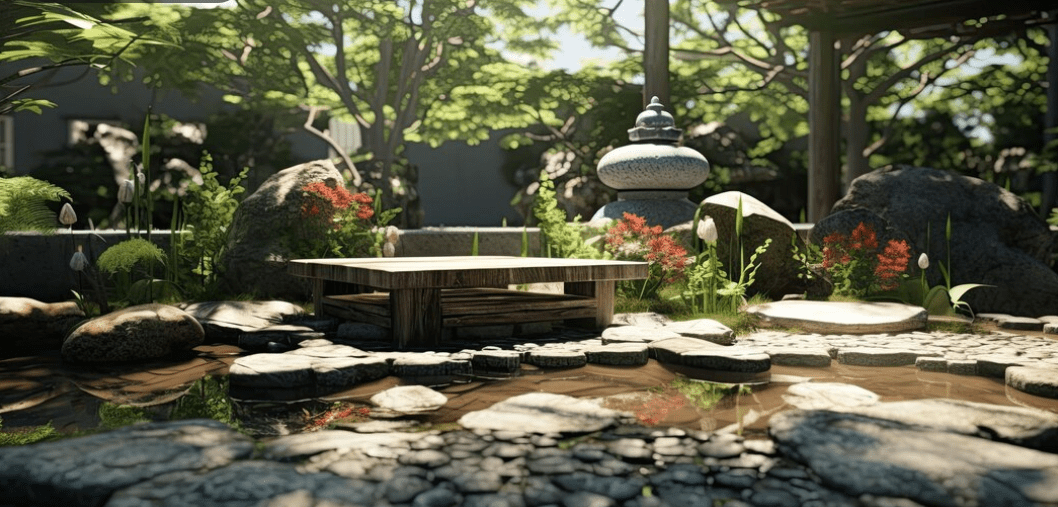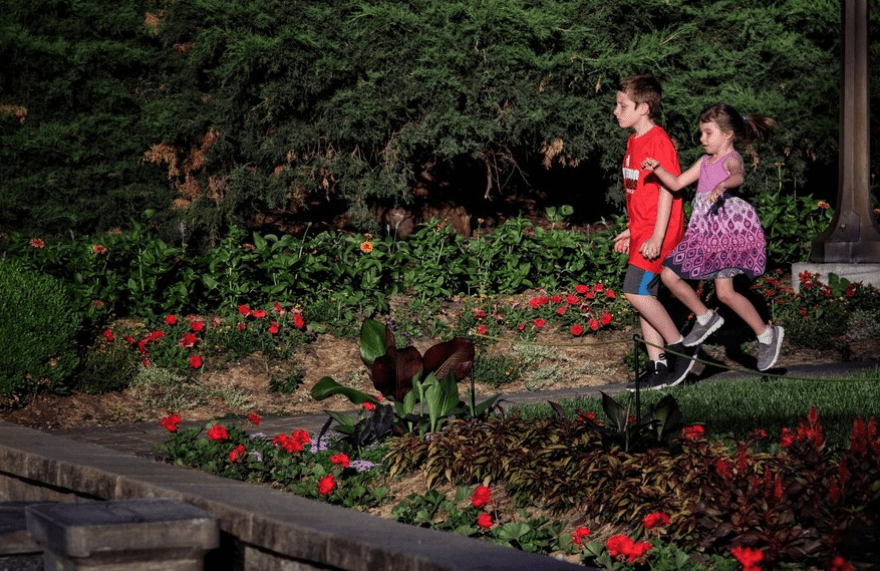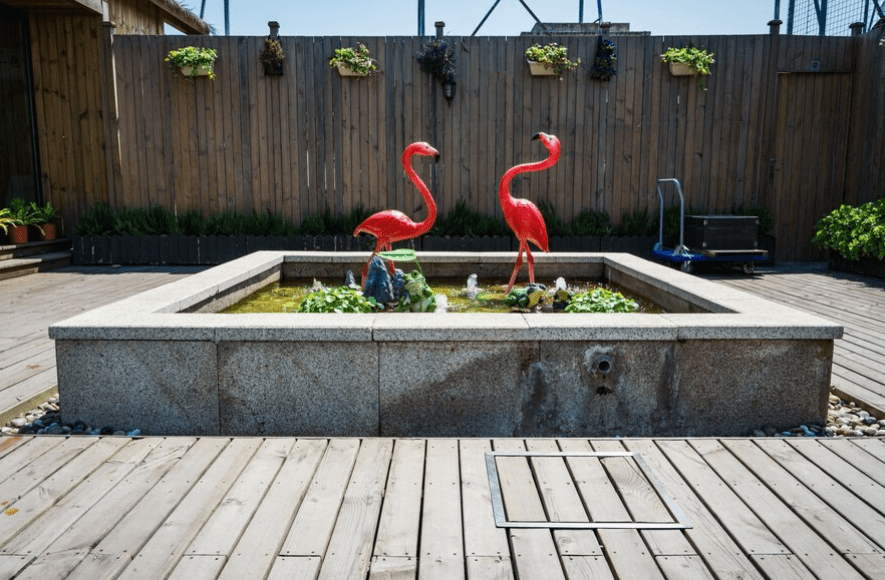
Exploring the Beauty of Pleasant Gardens: Tips for Creating a Serene Outdoor Oasis
A pleasant garden can be defined as a space that evokes a sense of peace, tranquility, and beauty. It is a place where one can relax, unwind, and connect with nature. A pleasant garden often includes elements such as lush greenery, colorful flowers, a soothing water feature, and comfortable seating areas. The importance of creating a serene outdoor space cannot be overstated. In today’s fast-paced world, it is essential to have a place where we can escape the hustle and bustle of daily life and find a moment of peace and relaxation. A well-designed garden provides a sanctuary where we can recharge, de-stress, and enjoy the beauty of nature. It also adds value to our homes and enhances our overall well-being. By creating a serene outdoor space, we can improve our mental and emotional health, reduce stress, and foster a deeper connection with the natural world. Whether you have a green thumb or are new to gardening, anyone can create a pleasant garden with a little effort and creativity. Start by planning your garden layout, choosing the right plants and flowers, and incorporating elements that promote relaxation and tranquility. With the right design and care, you can transform your outdoor space into a peaceful oasis that you can enjoy for years to come.
Pleasant gardens play a crucial role in providing a peaceful and tranquil outdoor space where individuals can unwind and connect with nature. In today’s fast-paced world, it is more important than ever to have a place where we can escape the stresses of daily life and find a moment of serenity. A well-designed garden not only adds aesthetic value to our homes but also contributes to our overall well-being. By incorporating elements such as comfortable seating, soothing water features, and fragrant blooms, you can create a calm and inviting space that promotes relaxation and reduces stress. Whether you have a large backyard or a small balcony, anyone can create a pleasant gardens with the right planning and care. Researching and selecting the right plants and flowers for your climate, considering the flow of the garden and incorporating elements that promote tranquility are essential steps in creating a serene outdoor space. With a little effort and creativity, you can transform your outdoor area into a peaceful oasis that you can enjoy for years to come.
Table of Contents
ToggleBenefits of Pleasant Gardens
Discuss the benefits of having a pleasant garden, such as stress reduction, improved mood, and enhanced property value.
Having a pleasant garden has numerous benefits, including stress reduction, improved mood, and enhanced property value. The presence of greenery and nature in our outdoor spaces has been proven to lower stress levels and promote relaxation. Being surrounded by plants and flowers can help to improve mood and mental well-being, providing a peaceful and calming environment. Additionally, a well-maintained and attractive garden can increase the value of your property, making it a worthwhile investment. By creating a pleasant gardens, you can not only improve your own quality of life but also enhance the overall beauty and value of your home. Whether it’s a small patio garden or a large backyard oasis, the benefits of having a pleasant garden are undeniable.
Explain how a well-designed garden can enhance the overall quality of life.
A well-designed garden can greatly enhance the overall quality of life. Researching and selecting the right plants and flowers for your climate, considering the flow of the garden, and incorporating elements that promote tranquility are essential steps in creating a serene outdoor space. With a little effort and creativity, you can transform your outdoor area into a peaceful oasis that you can enjoy for years to come.
Having a pleasant garden has numerous benefits, including stress reduction, improved mood, and enhanced property value. The presence of greenery and nature in our outdoor spaces has been proven to lower stress levels and promote relaxation. Being surrounded by plants and flowers can help to improve mood and mental well-being, providing a peaceful and calming environment. Additionally, a well-maintained and attractive garden can increase the value of your property, making it a worthwhile investment.
By creating a pleasant gardens, you can not only improve your own quality of life but also enhance the overall beauty and value of your home. Whether it’s a small patio garden or a large backyard oasis, the benefits of having a pleasant garden are undeniable.
Design Principles for Pleasant Gardens

Explore key design principles, including balance, symmetry, focal points, and color coordination.
When designing a pleasant garden, it’s important to consider key design principles such as balance, symmetry, focal points, and color coordination. These principles can help create a harmonious and visually appealing outdoor space. Balance is essential in creating a sense of stability and order within the garden. This can be achieved by evenly distributing plants and features throughout the space. Symmetry can also contribute to a sense of balance and can be achieved by mirroring elements on either side of a central axis. Focal points, such as a striking sculpture or a beautiful tree, can draw the eye and create visual interest within the garden. Finally, color coordination is crucial for creating a cohesive and inviting garden. By selecting a color scheme that complements the surrounding environment, you can create a harmonious and soothing outdoor space. By exploring these design principles, you can create a pleasant and serene garden that promotes relaxation and enjoyment.
Provide tips on incorporating elements like paths, seating areas, and water features.
When designing outdoor spaces, it’s important to incorporate elements like paths, seating areas, and water features to create a harmonious and visually appealing environment. Paths can help guide visitors through the space and can be made from materials like gravel, stone, or wood to add texture and visual interest. Seating areas, such as benches, chairs, or outdoor sofas, provide a place for people to relax and enjoy the scenery. Water features, like fountains or ponds, can add a sense of tranquility and can attract wildlife to the garden. When incorporating these elements, it’s important to consider the overall balance and symmetry of the space. By evenly distributing these features throughout the garden, and creating focal points with them, you can create a cohesive and inviting outdoor space that promotes relaxation and enjoyment. Additionally, coordinating the colors and materials of these elements with the surrounding environment can help create a harmonious and visually appealing outdoor space.
Choosing Plants for a Pleasant Gardens
Discuss plant selection based on climate, soil type, and desired aesthetic (e.g., flowering plants, evergreens, fragrant herbs).

When choosing plants for your garden, it’s important to consider the climate and soil type of your area. Different plants thrive in different environments, so it’s essential to choose ones that will flourish in your specific location. Researching native plants can be a great place to start, as they are already adapted to your area’s climate and soil conditions. Additionally, consider the aesthetic you want to achieve in your garden. Do you want vibrant flowering plants, lush evergreens, or fragrant herbs? By selecting plants based on your desired aesthetic, you can create a garden that is visually appealing and brings you joy. It’s also important to consider the maintenance requirements of the plants you choose, as low-maintenance options may be more suitable for some individuals. Overall, thoughtful plant selection will contribute to the creation of a pleasant and serene garden space.
Highlight low-maintenance options for easy upkeep.
When it comes to choosing plants for your garden, it’s important to consider the level of maintenance you’re willing to commit to. Low-maintenance options can save you time and effort while still providing a beautiful garden space. Look for plants that are drought-tolerant and require minimal watering, such as succulents or native grasses. Additionally, consider choosing plants that are pest and disease-resistant, reducing the need for frequent monitoring and treatment. Perennial plants are also a great option, as they come back year after year with minimal care. Groundcover plants can also help reduce maintenance by suppressing weeds and reducing the need for mowing. By selecting low-maintenance plants, you can create a beautiful garden space without the need for constant upkeep.
Seasonal Interest and Continuity

are important factors to consider when planning your garden. By choosing a variety of plants that bloom at different times of the year, you can ensure that your garden remains colorful and vibrant throughout the seasons. This can be achieved by incorporating a mix of annuals, perennials, and flowering shrubs that bloom at different times. Additionally, consider plants with interesting foliage and texture to add visual interest even when they are not in bloom. Continuity in your garden design can be achieved by incorporating elements that tie the different areas of your garden together, such as consistent color schemes, repeating plant varieties, or using hardscaping elements like pathways or borders. This creates a cohesive and visually appealing garden space that retains its beauty year-round. By considering both seasonal interest and continuity in your garden design, you can create a space that is both visually stunning and low-maintenance.
Garden Structures and Accessories
are essential elements to consider when planning your garden. Adding structures like pergolas, trellises, and arbors can provide support for climbing plants, create shaded areas, and add architectural interest to your garden. These structures also help define different areas of your garden and can be used to create a sense of privacy or enclosure. Additionally, adding accessories such as garden sculptures, fountains, and decorative planters can enhance the aesthetic appeal of your garden and add personality to the space. When selecting garden structures and accessories, consider the overall style and theme of your garden, as well as the practical function of each element. By carefully choosing and integrating these elements into your garden design, you can create a beautiful and functional outdoor space that reflects your personal style and enhances your enjoyment of the natural environment.
Creating Wildlife-Friendly Gardens

is not only beneficial for the environment, but it also adds a beautiful and lively touch to your outdoor space. To create a wildlife-friendly garden, you can start by choosing native plants that provide food and shelter for local wildlife. Plants like shrubs, trees, and flowers that produce berries, seeds, and nectar are great for attracting birds, butterflies, and other pollinators. Additionally, creating a water source such as a birdbath or a small pond can provide a drinking and bathing spot for wildlife.
Another way to make your garden wildlife-friendly is to create natural habitats such as log piles, rockeries, and dense vegetation that provide shelter for insects, amphibians, and small mammals. Avoiding the use of chemical pesticides and herbicides will also help maintain a healthy environment for wildlife in your garden.
By creating a wildlife-friendly garden, you not only contribute to the conservation of local ecosystems, but you also get to enjoy the beauty and diversity of nature right in your own backyard. It’s a win-win situation that allows you to connect with nature and support the local wildlife population.
Maintenance Tips for Pleasant Gardens
To maintain a pleasant gardens, it’s important to regularly water and fertilize your plants, trim any overgrown or dead foliage, and remove any weeds that may be competing for nutrients. Additionally, keeping an eye out for pests and diseases can help prevent any damage to your plants. It’s also important to regularly clean and maintain any garden structures or features, such as pathways, fences, and outdoor furniture. Lastly, taking the time to regularly mulch and compost can help improve the soil quality and overall health of your garden. By staying on top of these maintenance tasks, you can ensure that your garden remains a beautiful and enjoyable space for both you and any visitors.
Personalizing Your Garden Space

Creating a wildlife-friendly garden is not only beneficial for the local ecosystems, but it also allows you to enjoy the beauty and diversity of nature right in your own backyard. It’s a win-win situation that lets you connect with nature and support the local wildlife population. To maintain a pleasant gardens, it’s important to regularly water and fertilize your plants, trim any overgrown or dead foliage, and remove any weeds that may be competing for nutrients. Additionally, keeping an eye out for pests and diseases can help prevent any damage to your plants. Regular cleaning and maintenance of garden structures and features, such as pathways, fences, and outdoor furniture, is also important. Lastly, regularly mulching and composting can help improve the soil quality and overall health of your garden. By staying on top of these maintenance tasks, you can ensure that your garden remains a beautiful and enjoyable space for both you and any visitors. When personalizing your garden space, consider adding unique features such as a water feature, a seating area, or special plantings that reflect your personal style and preferences. You can also incorporate elements that attract wildlife, such as bird feeders, butterfly-friendly plants, and insect habitats. Your garden space should reflect your personality and provide a relaxing and enjoyable environment for you and your guests.
Case Studies and Inspirational Ideas
are a great way to learn from others and get motivated to improve your garden. By looking at successful garden designs and learning from the experiences of others, you can gather ideas and inspiration for your own garden space. There are many case studies available online and in gardening books that showcase beautiful and innovative garden designs. These case studies can provide insight into different gardening techniques, plant combinations, and design elements that can help you create a unique and stunning garden.
In addition to case studies, it’s important to personalize your garden space to reflect your own style and preferences. Consider adding unique features such as a water feature, a seating area, or special plantings that showcase your personality. You can also incorporate elements that attract wildlife, such as bird feeders, butterfly-friendly plants, and insect habitats. Creating a personalized and inviting garden space will make it a relaxing and enjoyable environment for you and your guests.
When it comes to maintaining your garden, it’s important to stay on top of regular cleaning and maintenance tasks. Keeping an eye out for pests and diseases can help prevent any damage to your plants, while regularly mulching and composting can help improve the soil quality and overall health of your garden. By staying proactive in maintaining your garden, you can ensure that it remains a beautiful and enjoyable space for both you and any visitors. So, take the time to explore case studies and gather inspiration, and then personalize and maintain your garden to create a stunning and inviting outdoor space.
In conclusion, creating a serene outdoor oasis is all about incorporating elements that bring peace and tranquility to your garden. From choosing the right plants to creating a soothing atmosphere, there are many ways to transform your outdoor space into a beautiful and relaxing retreat. By following these tips and taking the time to design and maintain your garden, you can create a peaceful outdoor oasis that you can enjoy for years to come.
Frequently asked questions And Answer
Some essential elements for creating a serene outdoor oasis include comfortable seating, lush greenery, soothing water features, and soft ambient lighting.
You can incorporate natural elements by adding a variety of plants, trees, and flowers, as well as using natural materials such as wood and stone for furniture and decor.
To maintain a peaceful atmosphere, consider adding wind chimes or gentle music, minimizing clutter, and creating designated areas for relaxation and meditation.
You can attract wildlife by planting native flowers and providing bird feeders or bird baths, while still maintaining a tranquil environment by choosing plants and features that blend harmoniously with the surroundings.
You can enhance the visual appeal by incorporating a variety of colors and textures through flowers, foliage, and outdoor decor, as well as creating focal points with sculptures or architectural elements
To create a sense of privacy, consider using tall hedges or strategically placed trellises with climbing plants, as well as adding curtains or screens to block out unwanted views.
Low-maintenance landscaping ideas include using drought-tolerant plants, installing an automated irrigation system, and choosing durable, weather-resistant materials for outdoor furniture and structures.
You can incorporate sustainable practices by using rainwater harvesting, composting organic waste, and choosing native plants that require minimal water and maintenance. Additionally, consider using solar-powered lighting and energy-efficient appliances for your outdoor oasis.
